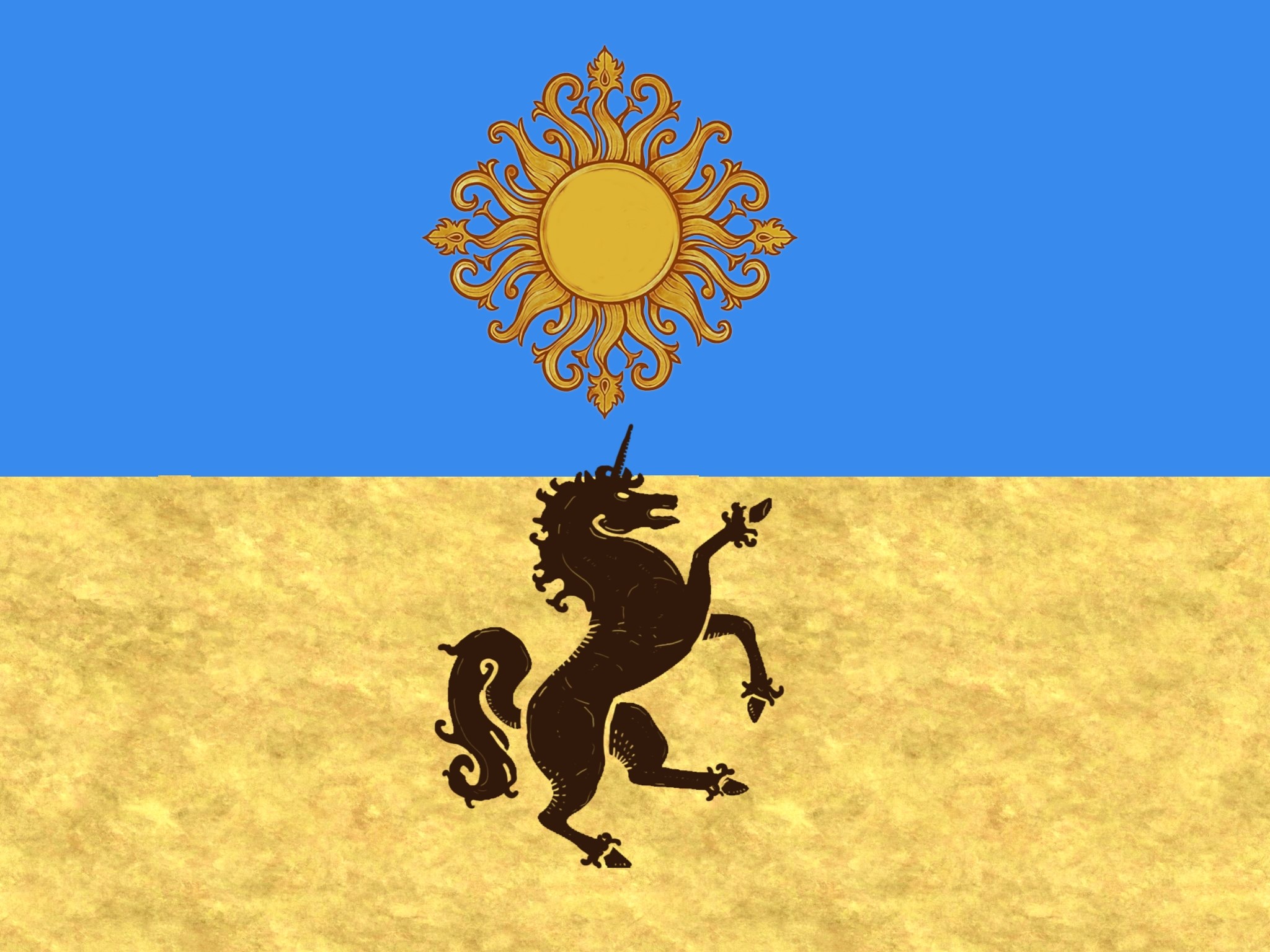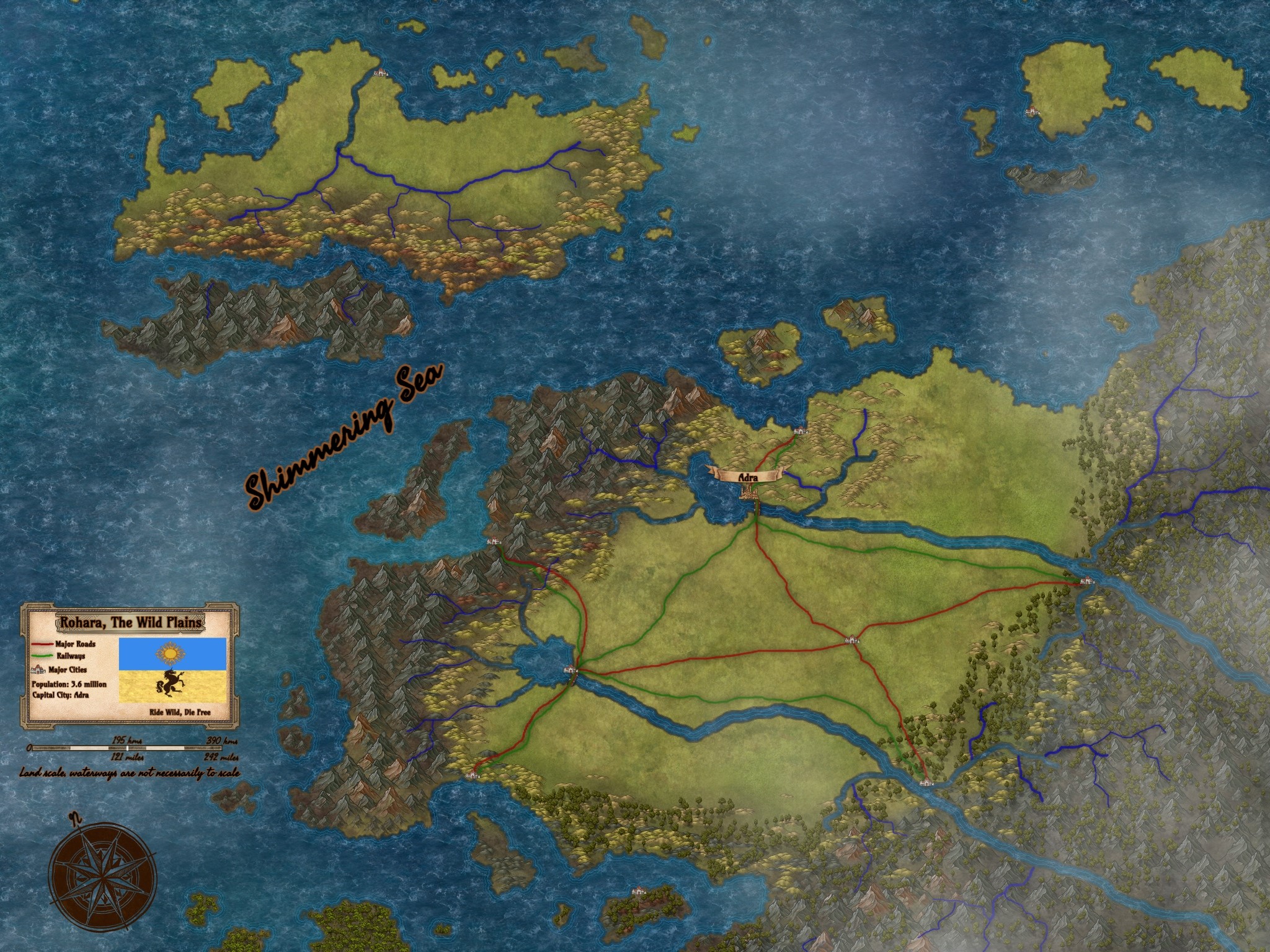Geography
Rohara is a nation known for its dominant geography, that of the Grazea, and for good reason. The Grazea is truly massive, a region of grassland and prairie that encompasses very roughly, a million square kilometers of land. The Grazea is a marvel, a rich grassland that grows wild with all variety of grains, wild root vegetables, corns, maize and more amongst the other wild grasses, as if once long ago perhaps it was cultivated in a selective process of sorts. However such a theory is unsubstantiated, for no records of such a thing exist. The boon of it cannot be denied however, for though Rohara is known as Valerick's breadbasket, very little of her agricultural power had to come from farming families altering or downright destroying/shifting the biome. Instead they for the most part work with the land itself, able to basically influence which plants succeed, seeing those propogate in larger and harvestable amounts. Natural fields of wild squash, maize, pumpkin and more dominate some regions, whereas beans, peas and various grains and other such green leafy shrubs and plants dominate others. The land, much like the Depen on Durol, seems to be a food paradise, as if ultimately done almost on purpose, or as a gift from Talia herself, the lady of the leaves. Potatoes and wild carrots, radish, onion, and more also thrive in dominating and large amounts.
This ultimately has lent itself to an agricultural superpower developing within this nation, which should come as no surprise to any. The Grazea is dotted with small hubs, little villages and townships, these fortified central locations for people and commerce, small, rustic, simple, and around them will be homesteads, farms, plantations, ranches and the like radiating outwards. The Grazea is also known to be one of the safer wilderness regions on Valerick. The open grasslands see plentiful wildlife and has its own share of predators one should be worried about, but besides raiding bands of things such as orcs from the hillier regions, or ogres or felyixes from the more wooded and mountainous regions on rare occasions, for the most part there are few direct threats or sentient opposition to the peoples of Rohara amongst the Grazea.
The rest of her geography is dominated by various hill-lands and the Kharzinc Mountain Range. The Kharzinc Range is an interesting region, for very little of it has been heavily explored and even less has been heavily settled, however the area that has been thus far has been heavily mined and quarried for the specific heavy bedrock of these mountains is favored as a foundation building material across Rohara. It is solid, heavy, yet very erosion and corrosion resistant as well. This stone has been described as an odd sort of 'volcanic' granite, which is a ridiculous term, yet is the best that even the most skilled dwarven geologists have been able to think up for the material, for its hardness and mineral makeup defies better classification. Regionally the stone is known as Kharglus, which is where one half of the mountain range's name comes from . The second is with the discovery of notable zinc deposits, a useful mineral for trading with Waston, as zinc ore has a wide range of applications in a variety of magnetech constructs and structures in various facets of that technological field.
Ecosystem and Climate
Rohara would best be described as a temperate climate zone as one might imagine, given that the region does experience a true snowy winter, but it is short and doesn't over stay its welcome. Combined with her long growing season, but her manageable and not blistering summers, temperate would seem the most apt description.
Rohara is a place where north meets south. Leopards hunt her more southern regions, whilst wolves, coyotes and pumas prowl her northern mountains, hills and grasslands. Various species of antelope in the southern grasslands give way to deer, elk and the hefty plains bison. Brown and black bears stalk the northern regions amongst the hills and scrub. A wide variety of birds make their homes here, both migratory and permanent resident species, as well as reptiles and amphibians. Her waterways are home to two notable alligator species, as well as further south to the Rudder Crocodile, a uniquely swift swimming species, the fastest swimmer of any crocodilian species known. The sheer variety of her flora and fauna is vast across all her biomes and ecosystems and is a unique clash and mixing of migratory species and less transient species whom have uniquely adapted, oft being a unique subspecies (such as the cloud leopards in southern Rohara, with smokier fur coats, less pronounced in the yellow to black, and also having thicker coats, designed to thin and rethicken over the year to deal with winter) to a place that embodies both the warmer climes of more southern destinations most of the year, but does experience a notable and still chilling three month winter complete with storms, snow and ice. The crocodilians here have unique burrowing adaptations and an ability to simply go into a torpor like state six to eight feet underground, burrowing yearly into some region or other of lakeshore and riverbank to survive winter.Ecosystem Cycles
Rohara experiences a short blustery winter with plentiful snow and ice, and though not truly bone cracking cold like say Suranth, her temperatures can and do plummet well below freezing for this short time. Her spring is wet, humid and rainy, with the melt swiftly invigorating the soil, and the sun encouraging plant life to erupt back to life rapidly. Her summer is pleasant, hot, but not to humid, with plentiful rain and sunshine, seeing the flora absolutely flourish, and this season lasts the longest, almost five months. Her autumn sees a bit drier and cooler conditions, as the leaves change slowly and the wild bounty of fruit, vegetable, and grain ripens and offers a glut for humanoid and grazing animal alike to take great advantage of.
By her coastlines where cities and smaller communities have popped up, you have vibrant coral reefs that offer thick and plentiful bounties of the sea. Kelps, seaweeds, a wide and vast variety of fish, crustcean and various sea mammal species and more are plentiful in these temperate waters and vibrant reefs, making it no surprise people also live in these regions in large numbers, the resources plentiful.
Localized Phenomena
Rohara's winter is a phenomenon in and of itself. No other part of Gavis-Lune, not even her neighbors in Valewyr, or her directly southern neighbor the desert nation of Susma, experience anything remotely close. Rohara is unique and all its own due to being situated at a place, it would seem, where the northern polar currents, both oceanic and aerial, clash just right with the dominant southern currents that mostly influnence the biomes in the rest of the continent to create the perfect conditions for a short, but heavy, winter. Roharan Clippers, as they are known, are the sudden galestorms of snow and ice that can just whip up, raging for a few hours and dumping inches of ice or a few feet of snow over an entire region. These storms are most common in the first six to eight weeks of winter and then taper off swiftly, with the melt beginning after only twelve to fourteen weeks, yet it is a harsh time, despite its shortness.
Natural Resources
The lands of Rohara, first and foremost, earn the nickname the breadbasket or pantry of Valerick with good reason. Fully some twenty to twenty five percent of the world's produce grows here and is shipped from here around the world. Rohara is the only nation on Valerick that does not import vegetables of any kind, for she has no need. She imports fruits more heavily, this being the predominant exchanges she makes with Depenwood. Besides this, her grasslands see her being one of the larger exporters of farm raised meats, such as beef, pork, and various types of poultry, as ranching and farming go hand in hand for a lot of families and communities in Rohara. Besides this however, what is also notable is that Rohara is the largest zinc exporter, and is in fact the only zinc exporter, for the only other (and much smaller) deposits known to exist thus far are in Waston itself. That and of course Kharglus, the interesting and unique stone of the Kharzinc Range, is also a boon that the peoples of Rohara enjoy and tap into quite well, though less of this is exported, it is much more of a domestic product.
Tourism
Rohara is a nation of excellent hospitality and wonderful hearty comfortable foods and drinks. Her culture is welcoming, friendly yet fierce, kind and humble, yet with a simple unspoken pride. Hospitality is a big thing in Rohara and so you will never find a lack of accomodations, good food and drink. Furthermore it is a land seeped in history of all sorts and especially military history. Thus they see a not insignificant amount of tourism both for pleasure and for education. It is believed to be the birthplace of agriculture and as such also sees its share of historical researchers and archaeological types whom bring in projects and explorative digs and the like as well.


Comments